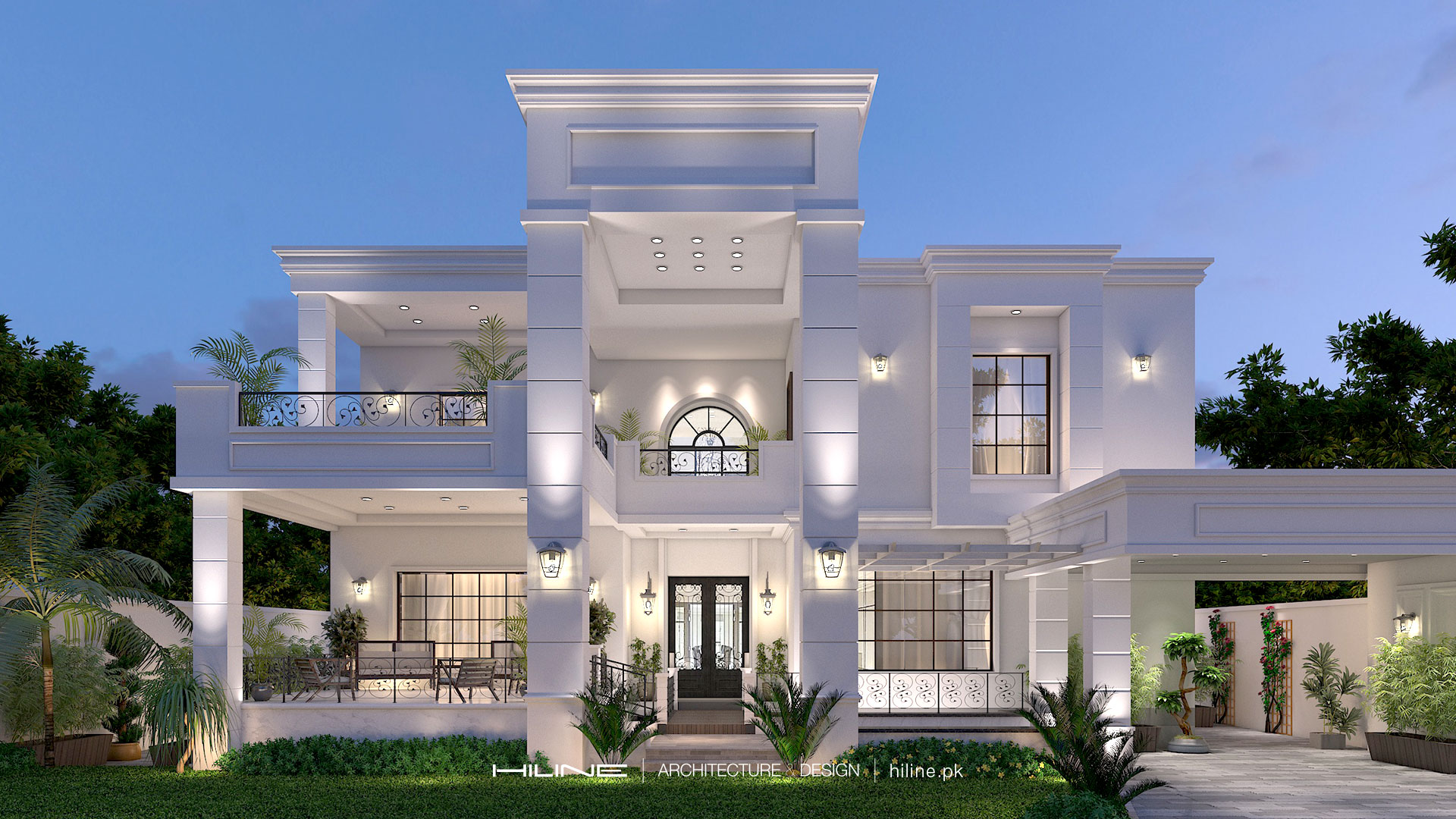Hallo, you! If you’re diving into the world of home design, you’re probably asking yourself one big question: how do you balance function and aesthetics in your modern home? It’s a challenge that many homeowners face when trying to create a space that not only looks beautiful but also serves their everyday needs. The good news is that with thoughtful planning and a bit of creativity, you can achieve a harmonious blend of style and practicality. This article is all about helping you find that perfect balance in your home design. So, let’s explore how you can make your living space both functional and aesthetically pleasing without compromising on either.
The Importance of Functionality
When it comes to designing a home, functionality is key. After all, your home needs to cater to your daily activities, provide comfort, and make life easier. Functionality in home design means creating spaces that work for you, whether it’s a kitchen that makes cooking a breeze, a living room that’s perfect for entertaining, or a bedroom that’s a sanctuary for rest. But according to sources havenblueprint.com functional design isn’t just about practicality—it’s also about ensuring that your home supports your lifestyle and enhances your well-being. For example, consider the flow of your home. Open floor plans are popular because they allow for easy movement and make spaces feel larger. But if you need privacy or quiet, separate rooms might be more functional for you. The key is to think about how you use each space and design it to meet those needs.
Aesthetics: Creating a Beautiful Space
While functionality is crucial, aesthetics shouldn’t be overlooked. After all, your home is a reflection of your personal style, and creating a space that’s visually appealing can bring joy and satisfaction. Aesthetics in home design involves everything from color schemes and furniture choices to lighting and décor. It’s about creating a space that feels cohesive, inviting, and uniquely yours. To achieve a well-designed aesthetic, start by choosing a color palette that sets the tone for your home. Neutral colors like whites, grays, and beiges are popular in modern design because they create a calm and sophisticated backdrop. However, don’t be afraid to incorporate pops of color through accessories, artwork, or accent walls. Another key aspect of aesthetics is the use of textures and materials. Mixing different textures, like wood, metal, and fabric, can add depth and interest to your space. Finally, consider the layout and placement of furniture and décor. A well-planned layout can enhance the beauty of a room while also ensuring that it’s functional and comfortable.
Combining Form and Function
The real magic in home design happens when you successfully combine form and function. This means creating a space that’s both practical and beautiful, without sacrificing one for the other. To achieve this balance, it’s important to start with a clear vision of how you want your home to look and feel, while also considering how it needs to function. One approach is to choose furniture and fixtures that are both stylish and practical. For example, a sleek, modern sofa that offers comfort and durability, or a kitchen island that serves as both a workspace and a gathering spot. Another strategy is to integrate storage solutions that are both functional and aesthetically pleasing. Built-in shelves, under-bed storage, and multi-purpose furniture can help you keep your space organized without compromising on style. Remember, a well-designed home is one where form and function work together to create a space that’s not only beautiful but also perfectly suited to your needs.
The Role of Lighting in Home Design
Lighting plays a crucial role in both the functionality and aesthetics of your home. The right lighting can enhance the beauty of a space, create a mood, and make tasks easier to perform. When planning your lighting, consider the different types of lighting that each room needs. Ambient lighting provides overall illumination, task lighting focuses on specific activities like reading or cooking, and accent lighting highlights architectural features or artwork. In modern home design, layered lighting is key to creating a dynamic and flexible space. This means using a combination of different light sources, such as ceiling lights, floor lamps, and wall sconces, to achieve the desired effect. Additionally, consider the aesthetic impact of your lighting fixtures. Sleek, minimalist fixtures can complement a modern design, while statement pieces like chandeliers or pendant lights can serve as focal points in a room. Finally, don’t forget about natural light—maximize it by using light, airy curtains or opting for open windows to bring in as much natural light as possible. By carefully planning your lighting, you can enhance both the function and aesthetics of your home.
Incorporating Technology for Function and Style
Technology is an increasingly important aspect of modern home design, offering ways to enhance both function and aesthetics. Smart home devices, for example, can make your home more efficient and convenient while also adding a sleek, modern look. Consider incorporating smart lighting systems that allow you to control the ambiance of your home with the touch of a button, or smart thermostats that adjust the temperature based on your preferences. Additionally, home automation systems can integrate security, entertainment, and climate control, all while being discreetly installed to maintain the clean lines and open spaces of modern design. Another way to blend technology with design is through the use of built-in audio systems, hidden televisions, or wireless charging stations. These features offer convenience and functionality without compromising on style. By thoughtfully integrating technology into your home, you can create a space that’s not only cutting-edge but also beautifully designed.
Maximizing Space in Small Homes
In modern home design, making the most of small spaces is a common challenge, but with the right strategies, you can create a functional and stylish home, no matter the size. One key to maximizing space is choosing multi-functional furniture, such as a sofa bed, a dining table with built-in storage, or a coffee table that doubles as a desk. Another strategy is to use vertical space effectively. Wall-mounted shelves, hanging racks, and tall cabinets can provide additional storage without taking up valuable floor space. Mirrors can also be used strategically to make a small room feel larger by reflecting light and creating the illusion of more space. Additionally, consider an open floor plan, which can make a small home feel more spacious by eliminating unnecessary walls and creating a more fluid layout. When it comes to décor, keep it simple—opt for a minimalist approach with a few well-chosen pieces rather than overcrowding the space with too much furniture or accessories. With thoughtful planning, even the smallest home can be functional, stylish, and comfortable.
Creating a Cohesive Design
A cohesive design is one where all the elements of your home work together to create a unified look and feel. This is especially important in modern home design, where clean lines and minimalism often play a key role. To achieve a cohesive design, start by choosing a consistent color palette that flows throughout your home. This doesn’t mean every room needs to be the same color, but there should be a sense of continuity—perhaps using different shades of the same color or complementary colors that create a harmonious look. Additionally, consider the style of your furniture and décor. Mixing different styles can work if done thoughtfully, but generally, sticking to a consistent design aesthetic will create a more polished and cohesive look. Finally, pay attention to the details. Small elements like door handles, light switches, and even the way you arrange your décor can contribute to the overall cohesiveness of your design. By carefully considering these elements, you can create a home that feels unified and well-thought-out.
Personalizing Your Space
While it’s important to consider function and aesthetics in your home design, it’s equally important to make your space feel personal and reflective of your own style. This is where you can have fun and let your personality shine through. Consider incorporating personal touches like family photos, artwork you’ve collected on your travels, or décor items that have special meaning to you. These elements not only add character to your home but also make it uniquely yours. Another way to personalize your space is through custom furniture or DIY projects. Creating your own artwork, building a piece of furniture, or even just repurposing an old item can add a personal and creative touch to your home. Additionally, think about the mood you want to create in each room—whether it’s a calm, relaxing space or a vibrant, energizing one. By adding personal touches, you can transform your house into a home that truly reflects who you are.




